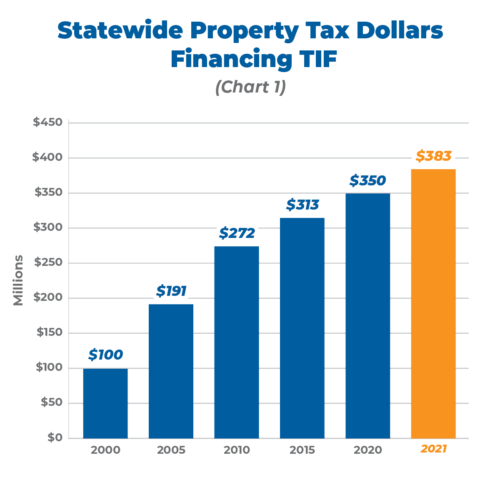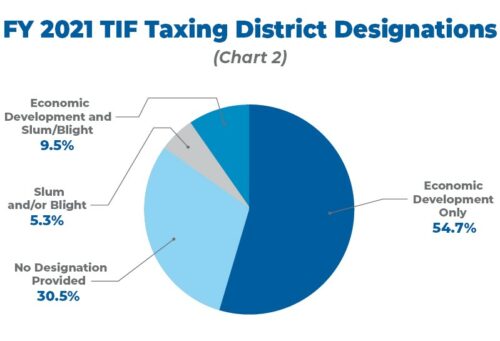Local governments may be tying up property tax dollars with needless incentives while further saddling residents and businesses with growing tax burdens. Urban renewal programs shouldn’t be utilized in areas that are already growing or on projects that would occur without a subsidy anyway.
BACKGROUND
Urban renewal areas have existed in Iowa since 1957, and the designation can allow governments to finance public infrastructure, redevelop slums or blighted areas, or (very broadly) promote economic development. Local governments have several tools at their disposal to accomplish those goals, with tax increment financing (TIF) being a common one.
TIF, which ostensibly reserves the incremental property tax increases from the designated areas for urban renewal funding, is permitted in 49 states (with Arizona as the only exception), and Iowa first authorized its use by cities in 1969. Counties gained limited use in 1991, but by 1996, counties enjoyed the same broad use of urban renewal tools, including TIF, as cities. Other property tax incentives available in Iowa include abatements (full or partial reduction in property taxes) and enterprise zones (typically providing distressed areas tax breaks and additional incentives).
Approximately 900 active urban renewal areas are spread across the state, including 725 that generated TIF revenue in 2021. Property tax dollars reserved for TIF projects first eclipsed $100 million in 2000 and have multiplied rapidly over the past two decades (Chart 1).

Source: Legislative Services Agency
PROBLEM
Unfortunately, property tax incentives, including TIF, haven’t created economic growth. Iowa’s Department of Revenue analyzed TIF activity in the state over the course of 15 years and concluded that TIF likely “leads to no net employment or wage gains when measured for entire local economies.” A series of national studies examining 50 years of property tax incentives similarly found “little evidence of economic benefits.”
What such widespread use of urban renewal areas can do, however, is subsidize development that would have happened even without incentives and train businesses and developers to lobby for their own handouts from the taxpayer. Communities whose public officials lean heavily on these programs may find fees and other taxes increasing to make up for the property tax dollars they have given away. This means local governments may be tying up property tax dollars needlessly while further saddling residents and businesses with growing tax burdens.
Local taxpayers aren’t the only ones footing the bill for incentives, either. Given Iowa’s laws governing urban renewal areas, the state’s general fund must backfill the school aid formula to cover property taxes devoted to such incentives. In FY22, for instance, Iowa paid out over $75 million to cover TIF’s impact on the school aid formula and over $13 million for the impact of abatements.
SOLUTION
Beyond shifting the focus of local tax policy from an endless cycle of targeted handouts to one of lower rates that benefit all households and businesses, Iowa can improve its urban renewal practices in a variety of ways:

Source: Legislative Services Agency
This piece is part of an upcoming comprehensive Iowa property tax tool kit.
